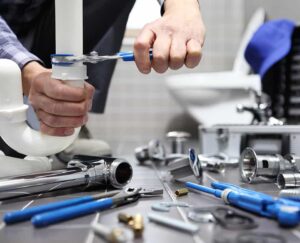How Long Does A Sewer Line Repair Take? Timing Your Household Fix
Sewer line issues are the ultimate unwelcome house guest. When your yard turns swampy or your drains start rebelling, it’s clear: the sewer line needs attention. But how long will the repair take?
That’s the million-dollar question for homeowners juggling busy schedules. Let’s break it down, step by step, so you know what to expect and can plan accordingly.
What’s Going On with My Sewer Line?
Every sewer line problem is a little different. From tree roots invading your pipes to debris causing blockages or aging pipes cracking under pressure, the variety of issues affects how long repairs will take.
For example:
Blockages are usually a quick fix if caught early. Think hours, not days. Tree roots? Those stubborn intruders take more time because they require cutting, clearing, and preventative measures to stop regrowth. Broken or collapsed pipes demand serious attention, often stretching the repair timeline into days or even weeks. Understanding what’s causing your sewer line woes is the first step to estimating how long the repair will take.
How Severe Is the Damage?
The extent of the damage is a major factor in determining the timeline. Small cracks or minor blockages are relatively easy to address. But when pipes are severely damaged—like when a section has collapsed—it’s a whole different story. Minor repairs might only take a day or two.
Major repairs or replacements can stretch across several days, especially if excavation is involved. Contractors often use camera inspections to assess the damage. These inspections give you a clear picture (literally!) of what’s happening underground, so you’ll know what kind of timeline you’re looking at.
Traditional vs. Trenchless Repairs
Sewer repair methods have evolved over the years. The method used plays a big role in how long the job takes.
Traditional repairs involve digging up the affected pipe, which means longer timelines (and often a torn-up yard). This process can take days or even weeks, depending on the extent of the work.
Trenchless repairs like cured-in-place pipe (CIPP) or pipe bursting are faster and less disruptive. They usually take a day or two because there’s minimal digging involved. Your contractor will recommend the best method based on the damage, but if trenchless is an option, it’s usually the quicker, cleaner choice.
Who’s Doing the Work?
The contractor you choose can significantly impact how long your sewer line repair takes. Experienced professionals with a good reputation will work efficiently and communicate clearly, so you’re not left wondering what’s happening.
When choosing a contractor:
- Look for someone with plenty of experience in sewer repairs.
- Read reviews or ask for recommendations.
- Get estimates from multiple contractors to compare timelines and costs.
The right contractor will not only do the job well but also keep you informed about the process and any unexpected delays.
Possible Delays You Should Know About
No matter how well you plan, there are always potential obstacles that can throw a wrench in the timeline.
Here are a few common ones:
- Weather: Rain can delay excavation work, and extreme cold can make digging more challenging.
- Permits: Depending on where you live, sewer line repairs may require permits, which can take time to obtain.
- Accessibility: If your sewer line is located under landscaping, a driveway, or near other utilities, it might take longer to access and repair.
Good contractors will anticipate these issues and communicate them to you upfront, so you’re not caught off guard.
How Long Will It Take?
Now that we’ve covered all the variables, let’s talk about actual timelines.
Here’s a general breakdown:
- Small blockages or minor repairs: 1–2 days.
- Trenchless repairs: 1–3 days.
- Extensive damage requiring excavation: 3–7 days (or longer if complications arise).
Keep in mind that these are averages. Your specific situation might fall outside these ranges depending on the factors we’ve discussed.
What Happens After Repairs?
Once the repairs are done, there’s usually some cleanup involved, especially if excavation is necessary. Your contractor should restore your yard as much as possible, but some landscaping repairs might fall on you.
You’ll also want to keep an eye on your plumbing after the repair. Watch for signs of recurring issues, like slow drains or unusual odors. If anything seems off, don’t hesitate to call your contractor for a follow-up.
Can Technology Speed Things Up?
Absolutely! Modern technology has revolutionized sewer repairs, making them faster and more efficient. Camera inspections can pinpoint the problem quickly, cutting down on guesswork and unnecessary digging. Trenchless methods like CIPP repairs or pipe bursting use advanced equipment to fix pipes without the need for extensive excavation. When choosing a contractor, ask about their technology and methods. Investing in a company that uses modern tools can save you both time and hassle.
How Much Will It Cost?
The cost of sewer line repairs depends on several factors, including the method used, the severity of the damage, and your location. Trenchless repairs are often more expensive upfront but can save money in the long run because they’re quicker and less disruptive.
Ask your contractor for a detailed estimate that includes labor, materials, permits, and any additional costs like landscaping restoration. Having a clear picture of the costs will help you budget and avoid surprises.
Take Control of Your Sewer Line Repairs
Sewer line repairs might not be fun, but understanding the process can make them less stressful. By knowing what to expect and working with a reliable contractor, you can minimize disruptions and get your home back to normal as quickly as possible.
Whether it’s a quick fix or a major overhaul, the key is communication and planning. With the right team on your side, you’ll be flushing away worries and enjoying free-flowing pipes again in no time.
